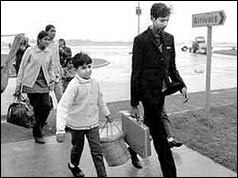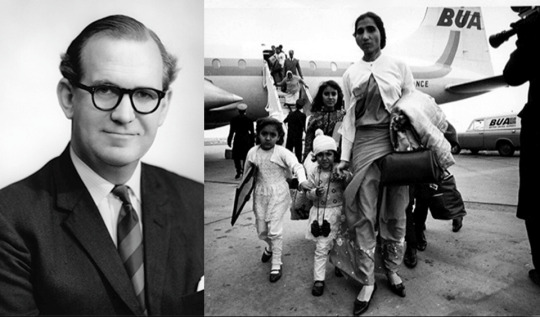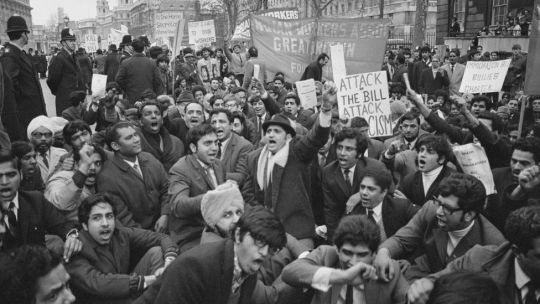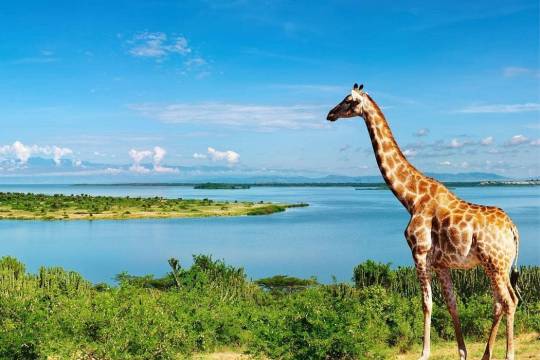#Entebbe International Airport
Explore tagged Tumblr posts
Text
#uganda airport transfers#entebbe airport transfers#entebbe airport taxi#entebbe international airport#reliable taxi & shuttle services in uganda#entebbe airport#airport transfers#shuttle services in uganda#airport transfers taxi#kampala shuttle services
0 notes
Text









onthisdayinjewishistory
July 4, 1976: Entebbe Rescue ⚡️🇮🇱 On 26.6.76, the terror groups, Popular Front for the Liberation of Palestine and the Red Army Faction (a West German radical leftist group) hijacked an Air France plane flying from Israel to France. They took 248 passengers hostage and released 148 non-Israeli or Jewish hostages after stopping in Athens. After, they flew to Uganda and demanded the release of 47 terrorists or they would shoot the hostages. Lt. Colonel Joshua Shani was tasked in leading the rescue with two days to plan. Working with Lt. Col. Yonatan “Yoni” Netanyahu, they formulated a plan in those two days, improvising for the remaining challenges. They decided to use President Idi Amin’s nightly route to their advantage, driving up in vehicles similar to his convoy to approach the terminal discreetly. Although the mission hadn’t been approved by the Israeli government, the planes took off #onthisday due to time constraints. Flying low to avoid radar detection, they reached Uganda despite encountering bad weather. The paratroopers dismounted, engaged with security forces, and stormed the terminal. Simultaneously, the IDF destroyed eight out of twelve Ugandan Air Force planes to prevent pursuit. The hostages were rescued, loaded onto a plane, and flown to Israel. The mission was a success, saving 102 out of the remaining 106 hostages. Lt. Col. Yonatan “Yoni” Netanyahu was killed in action and 3 of the hostages were also lost in the process. Lt. Colonel Joshua Shani and Lt. Col. Yonatan “Yoni” Netanyahu got widespread recognition for their bravery and leadership. They were commended by the Israeli government and received military honors for their role in saving the hostages. Many, including the UN and Uganda itself, condemned the rescue in a similar fashion as some did in the recent Gaza hostage rescue mission last month. The mission was as a testament to the elite training and capabilities of the IDF in executing complex and high-risk operations. The event also led to a reassessment of airport security measures. This was one of many hijackings from Palestinian terror groups in the 70’s in a backwards attempt to gain international attention.
#OTD#Jewish History#Entebbe#Rescue#Uganda#PFLP–EO terrorists#Operation Thunderbolt#Operation Yonatan#Yonatan Netanyahu
59 notes
·
View notes
Text


On 18th September 1972, BBC News reported that the first 193 Ugandan refugees, fleeing persecution by the country’s military dictatorship, had arrived at Stansted Airport, Essex. Over half of the arrivals had British passports, and housing and immediate needs would be overseen by the Ugandan Resettlement Board.
Uganda’s Asian community, numbering around 55 000, many of whom ran family businesses and small enterprise, were ordered in August 1972 to leave the country within 90 days by President Idi Amin. Amin had publicly denounced Ugandan Asians as ‘bloodsuckers’, threatening that any who had not left by the arbitrary deadline of November 8th would be interned in military detention camps.
Many of the initial flight of refugees had endured frightening experiences prior to their departure from Uganda, at the hands of Amin’s troops. "On the way to the airport the coach was stopped by troops seven times, and we were all held at gun point," one refugee told reporters. Another stated that he had been robbed of personal valuables and Ugandan currency on the way to Entebbe airport.
News reports at the time cited some opposition within the UK over the acceptance of the Ugandan Asians. The Leicester local authority mounted a newspaper campaign urging refugees not to come to their region seeking jobs and housing. The BBC asserted that, in hindsight, the resettlement programme was seen as ‘a success story for British Immigration’.
The loss of the hardworking and successful Ugandan Asian community devastated Uganda’s agriculture, manufacturing and commerce. Idi Amin was deposed in 1979 and died in Jeddah in 2003, having been responsible for the deaths of as many as 300 000 Ugandan civilians during his reign of terror as President. In 1991, Ugandan President Yoweri Museveni invited the expelled community to return home to help rebuild the economy.
The Wilson Labour government also had to grapple with a refugee crisis from a former African colony.
In February 1968, BBC news reported;
"…Another 96 Indians and Pakistanis from Kenya have arrived in Britain, the latest in a growing exodus of Kenyan Asians fleeing from laws which prevent them making a living…"
Many Asian people living in Kenya had not taken up Kenyan citizenship following the country’s independence from Britain in 1963, but possessed British passports. Under Kenya’s Africanisation policy, non-citizens required work permits, and were being removed from employment in favour of Kenyan nationals. There was growing public demand for laws to prevent non-citizens from owning businesses or even operating as street and market traders. As a result, British passport holders were leaving Kenya at the rate of 1000 per month, leaving a huge deficit in skills and experience within the business community and civil service.
Fearing a backlash over the large numbers of Asian immigrants, Home Secretary, and future Prime Minister, James Callaghan, rushed through the Commonwealth Immigration Act, which made it a requirement that prospective immigrants must have a 'close connection' with Britain.

This led to disagreement in Cabinet, with Secretary of State for Commonwealth Affairs, George Thomson (1921-2008) arguing;
"…To pass such legislation would be wrong in principle, clearly discrimination on the grounds of colour, and contrary to everything we stand for…"
In 1971, the Heath government made further legislative changes that would mean that (some) immigrants from Commonwealth countries would be treated no more favourably than those from the rest of the world, and that tightened restrictions on those who stayed by linking work permits to a specific job and location, requiring registration with police, and reapplication to stay in Britain each 12 months.
The Patrial Right of Abode lifted all restrictions on those immigrants with a direct ancestral connection with Britain.

Home Secretary Reginald Maudling (later famous for being smacked in the face by Irish MP Bernadette Devlin, and for having to resign over a corruption scandal linked with disgraced property developer John Poulson) denied that this was, in effect, a 'colour bar', telling the BBC;
"…Of course they are more likely to be white because we have on the whole more whites than coloureds in this country, but there is no colour bar involved…"
Unsurprisingly, not everyone was convinced.
Vishna Sharma, Executive Secretary of the Joint Council for the Welfare of Immigrants, described the bill to BBC News as, "basically racially discriminatory, repressive and divisive," and added, "It will create divisions amongst the Commonwealth citizens already living in this country on patrial and non-patrial basis. It will create day-to-day bureaucracy and interference on people living in this country. It will create more hardship for people wanting to enter into this country."

(Source; BBC reporting and history.com. Photo Credits; BBC News)
#social history#uk politics#working class history#social justice#uk government#human rights#uk history#british culture#society#history#race relations#immigration
28 notes
·
View notes
Text
Kampala-Entebbe expressway is Uganda first ever toll road.





2 notes
·
View notes
Text
8 DAYS UGANDA PRIMATES AND TANZANIA WILDERNESS SAFARI

Day 1: Transfer to Bwindi Impenetrable Forest national park-The Home of Mountain Gorillas.
Upon arrival at Entebbe Airport, you will be picked up by our driver guide from the guest house and embark on a road trip to western Uganda, aiming the Gorilla land of Bwindi Impenetrable Forest National Park. This is a long day drive with lunch stop over en route. Though long, the drive takes you through different features to include tropical rain forests, savannah fields and the terraced hills of Kigezi famously known as the Switzerland of East Africa. Drive to the lodge for relaxation as you wait for the next day’s adventure with dinner and overnight at Ride 4 a Woman
Day 2: Gorilla Trekking in Bwindi Impenetrable Forest National Park
After breakfast, you will head to the park headquarters for briefing by park ranger guides, to start Gorilla trekking – the activity can last up to 4 hours trek or more to find the Mountain Gorillas as you hike up and down the slopes with dense mist covered vegetation. This active quest will eventually bring you to the face of one of the most sought-after creatures-the mountain Gorillas. Upon reaching them, you will have 1 full hour with them while observing and learning their behavior as you take photos. You will have dinner and overnight at Ride 4 a Woman
Day 3: Game drive in Ishasha sector to search for tree climbing Lions and transfer to Northern Queen Elizabeth
Have an early breakfast and check out of your lodge and head to Ishasha sector of Queen Elizabeth National Park. The sector is small but has a bountiful of wildlife and is famous for the tree climbing lions. You will a game drive to try your luck of getting a glimpse of some of these lions as they lazily rest in the fig trees. After the drive have lunch at Topic Lodge and continue northwards to Kyambura sector of Queen Elizabeth National Park. Dinner and Overnight at Pumba Safari Cottages.
Day 4: Chimpanzee trekking in Kyambura gorge in Queen Elizabeth National Park
Have an early morning breakfast and head to Kyambura gorge Forest for Chimpanzee trekking to meet man’s closet cousins in the wild. The stunning Kyambura (or Chambura) Gorge also called the “Valley of Apes” is located in the far eastern corner of the well- known Queen Elizabeth National Park in south western Uganda. The landscape is among the most impressive you will find in Uganda and it is swarmed a rich wildlife bio-diversity that comprises of primates, wild animals as well as birds. Later embark on
an exciting road trip back to Entebbe with lunch en route, arriving in the evening for refreshment, and later dinner and overnight at Via Via Guest House.
Day 5: Transfer to Entebbe international airport for your flight to Arusha in Tanzania
After having breakfast or lunch depending on your scheduled flight, you will be transferred back to Entebbe to readily check in and board your flight to Tanzania as you say fare well to the pearl of Africa! You will spend an overnight at Arusha Planet Lodge.
Day 6: Transfer to Tarangire National Park for Wildlife View drive
Morning pickup from the Kilimanjaro Airport in Arusha and drive to Tarangire national park 3 hours driving to the park gate. Arrive for afternoon and evening game drive inside the park. Enjoy game drive inside the park with great chance to see lions, giraffes, zebra, impala and many more. Later during evening drive to Karatu for dinner and overnight at Tarangire Simba Lodge.
Day 7: Transfer to the Great Serengeti National Park for Wildlife View
After breakfast with your packed lunches around 7am start drive toward Serengeti national park via Ngorongoro conservation area it will take you 6 hours to be in the park, enjoy nice view of Manyara escarpment, Ngorongoro highlands, wildlife and many more. Arrive for afternoon and evening game drive while dinner and overnight at Into Africa Wild Camp.
Day 8: Morning game drive in Serengeti National and drive to Ngorongoro Crater
After breakfast from the packed lunches drive to Ngorongoro for 3 hours. Descend into the crater floor for the game drive, great herd of animal sightings like elephants, wildebeest, zebra and many more have a great view of lakes and the crater. Take you at picnic site and proceed with game drive, later drive to the lodge for dinner and overnight at Rhino Lodge.
2 notes
·
View notes
Text
Patriarch Theodore II of Alexandria Arrives in Uganda for Pastoral Visit
By Anastasios Gordon Sekandi – updated at 23:40 EAT Tuesday 18 February 2025 H.E Beatitude Theodore II, Patriarch and Pope of Alexandria and All Africa at State House Entebbe. 📷Anastasios Gordon Sekandi Entebbe, Uganda – His Beatitude Theodore II, Patriarch and Pope of Alexandria and All Africa, arrived at Entebbe International Airport on Tuesday evening to a warm reception at the VIP Lounge.…
#Airport#Alexandria#Bishop#Church#Community#Entebbe#Holyspirit#Love#Mission#Namungona#Orthodox#Pastoralvisit#Patriarch#pope#Theodore#Africa#Egypt#Gulu#Jinja#Politics#Society#Uganda
0 notes
Text
Turkish Airlines Flight TK612 Returns to Entebbe Due To Safety Precautions
A Turkish Airlines flight TK612, which departed from Entebbe International Airport for Istanbul on Sunday, January 26, 2025, at approximately 07:14 hours, was unable to proceed to its final destination due to safety precautions. The aircraft had 259 passengers and crew on board. The Airbus A330 (A333) aircraft safely returned and landed at Entebbe International Airport at 10:50 hours after…
0 notes
Text
Uganda Travel Guide: The Pearl of Africa — Everything You Need to Know: Specifications, FAQs, and More

Essential Travel Information
Entry Requirements - Valid passport (minimum 6 months validity) - East African tourist visa - Yellow fever vaccination certificate - Travel insurance documentation - Visa processing time: 3–5 business days - Visa cost: $50 USD
Climate Specifications - Average temperatures: 21–25°C (70–77°F) - Dry seasons: December-February, June-August - Rainy seasons: March-May, September-November - Altitude range: 600–4,321 meters - Humidity levels: 70–80%
Transportation Details - International airports: Entebbe International Airport - Domestic airlines: Aerolink Uganda - Road network: 80,000 km total - Average driving speed: 60–80 km/h on highways - Public transport options: buses, matatus (minibuses) - Organized tours - Motorcycle taxis (boda-boda)
Road Conditions - Variable road quality - 4x4 recommended - Seasonal accessibility - Professional drivers available - Journey planning essential
Best Time to Visit - Dry Seasons:
December to February — June to August - Peak Tourism: June to September - Gorilla Trekking: Year-round - Bird Watching: November to April
Key Destinations
Bwindi Impenetrable National Park - Mountain gorilla trekking - Over 350 bird species - Forest walks - Community visits - Luxury and budget lodges
Queen Elizabeth National Park - Tree-climbing lions - Boat safaris on Kazinga Channel - Chimpanzee tracking - Over 600 bird species - Savannah and forest habitats
Murchison Falls National Park - Spectacular waterfall - Nile River cruises - Big Five wildlife viewing - Sport fishing - Birding opportunities
Kibale National Park - Chimpanzee tracking - 13 primate species - Forest walks - Bird watching - Cultural experiences
Activities and Experiences
Wildlife Encounters 1. Gorilla Tracking
- Permit cost: $700 USD - Group size: Maximum 8 people - Viewing time: 1 hour - Success rate: 95% - Physical fitness: Moderate to challenging -Permit booking required -Moderate to strenuous hiking - Professional guides
2. Chimpanzee Tracking - Several locations available - Half-day and full-day options -Habituation experiences -Forest walking required -Photography opportunities
3. Game Drives - Vehicle type: 4x4 safari vehicles - Duration: 3–4 hours per drive - Best timing: Early morning/late afternoon - Group size: 4–6 per vehicle - Photography conditions: Excellent - Big Five viewing - Guided safaris - Night drives available - Custom itineraries
Cultural Experiences - Traditional village visits - Craft demonstrations - Music and dance performances - Local market tours - Community projects
Accommodation Standards
Luxury Lodges - Price range: $500–1,000+ per night - Amenities: Full board, Wi-Fi, private viewing decks - Room types: Private cottages/bandas - Service level: 24/7 concierge - Location: Park periphery or within
Mid-Range Options - Price range: $150–400 per night - Amenities: En-suite, restaurant, basic Wi-Fi - Room types: Standard rooms/tents - Service level: Daily housekeeping - Location: Near park entrances
Budget Accommodations - Price range: $30–100 per night - Amenities: Basic facilities - Room types: Shared/private rooms - Service level: Basic - Location: Town centers/trading posts
Health and Safety
Health Precautions - Malaria prevention - Water purification - Food safety - First aid kit - Travel insurance
Safety Considerations
- Follow park regulations - Use registered guides - Secure valuables - Night safety awareness - Emergency contacts
Practical Tips
Packing Essentials - Lightweight clothing - Rain gear - Hiking boots - Insect repellent - Camera equipment - Power bank - Binoculars
Budget Planning - Permit costs - Accommodation rates - Transportation expenses - Activity fees - Daily expenses
Communication - Local SIM cards - Internet availability - Emergency contacts - Language basics - Guide services
Photography Tips
Wildlife Photography - Camera settings - Best times - Equipment protection - Ethical guidelines - Location advice
Cultural Photography - Permission requirements - Respectful practices - Lighting conditions - Story-telling shots - Local customs
Conservation and Responsible Tourism
Environmental Impact - Waste management - Wildlife protection - Carbon footprint - Local initiatives - Sustainable practices
Community Support - Local employment - Cultural preservation - Education projects - Economic development - Fair trade
Food and Drink
Local Cuisine - Matoke (plantain) - Groundnut sauce - Fresh fruits - Local coffee - Street food
Dining Options - Restaurant availability - Lodge meals - Local eateries - Food safety - Special diets
Money Matters - Currency: Ugandan Shilling - ATMs: Available in major towns - Credit cards: Accepted at larger establishments - Tipping: Expected for services - Currency exchange: Available at banks and forex bureau
Remember to: - Book permits early - Plan around seasonal conditions - Respect wildlife and communities - Support local initiatives - Document your experiences responsibly
Frequently Asked Questions (FAQs)
1. When is the best time to visit Uganda? The prime seasons are December to February and June to August, offering dry conditions perfect for gorilla trekking and safari activities. However, Uganda is a year-round destination with each season offering unique experiences.
2. How much does a Uganda trip cost? Budget breakdown per person per day: - Budget: $100–150 - Mid-range: $200–350 - Luxury: $500+ This includes accommodation, activities, transportation, and meals.
3. Is Uganda safe for tourists? Uganda is generally safe for tourists, especially in national parks and major tourist areas. However, standard precautions should be taken: - Use registered tour operators - Avoid walking alone at night - Keep valuables secure - Follow local guidelines - Stay informed about current conditions
4. How fit do I need to be for gorilla trekking? Moderate fitness is required. Treks can last 2–6 hours through challenging terrain. The altitude and humidity can make it more strenuous. Regular walking and cardio exercise before your trip is recommended.
5. What vaccinations are required? Required: - Yellow fever Recommended: - Hepatitis A and B - Typhoid - Tetanus - Malaria prophylaxis
6. What should I pack for Uganda? Essential items include: - Lightweight, breathable clothing - Sturdy hiking boots - Rain jacket - Insect repellent - Sun protection - Camera equipment - Basic first aid kit
7. How many days do I need for a Uganda trip? Minimum recommended stay: - 7 days for basic highlights - 10–14 days for comprehensive experience - 14+ days for in-depth exploration
8. Can I combine Uganda with other East African countries? Yes, Uganda combines well with: - Rwanda (2–3 days) - Kenya (4–7 days) - Tanzania (4–7 days) Common routes and border crossings are well-established.
9. What’s the food like in Uganda? Ugandan cuisine features: - Fresh tropical fruits - Matoke (steamed plantains) - Fresh fish from lakes - Local coffee and tea - International options in major towns Most lodges cater to various dietary requirements.
10. How reliable is internet/phone connectivity? Connectivity varies: - Major towns: Good 4G coverage - Rural areas: Limited connectivity - National parks: Variable signal - Lodge Wi-Fi: Available but can be slow - Mobile data: Affordable local SIM cards available
Travel Tips and Best Practices
Cultural Awareness - Dress modestly - Ask before photographing people - Learn basic local greetings - Respect religious customs - Support local communities
Conclusion
Uganda offers an extraordinary combination of wildlife experiences, cultural encounters, and natural beauty. With proper planning and respect for local customs and environment, visitors can enjoy unforgettable experiences while contributing positively to local communities and conservation efforts.
Book now and enjoy a journey filled with excitement and wonder!
0 notes
Text
Cocaine Smuggling Foiled at Entebbe Airport
(Entebbe) – A significant quantity of cocaine was intercepted at Entebbe International Airport during a coordinated operation involving the Uganda Revenue Authority (URA) customs officers, the Special Forces Command (SFC), and the Anti-Narcotic Police Unit. The bust, which occurred in the early hours yesterday, led to the arrest of a Nigerian national suspected of attempting to smuggle the…

View On WordPress
0 notes
Text
Uganda Birding Safaris: 14-Day Journey to Spot Africa’s Rare Avian Wonders
Uganda, often referred to as the Pearl of Africa, is a dream destination for birding enthusiasts. With over 1,000 bird species—many of which are endemic or rare—Uganda offers an unparalleled birding safari experience. From the lush forests of Bwindi Impenetrable National Park to the sprawling wetlands of Mabamba Swamp, a 14-day birding safari in Uganda guarantees unforgettable encounters with some of Africa's most exquisite avian wonders.
Why Choose Uganda for Birding Safaris?
Uganda is a birdwatcher’s paradise, boasting diverse habitats that support a rich variety of bird species. Here are some reasons why Uganda stands out:
Diverse Birdlife: With more than 1,065 recorded bird species, Uganda accounts for over 50% of Africa’s bird population.
Unique Habitats: From montane forests and wetlands to savannahs and lakeshores, Uganda’s varied ecosystems attract different bird species.
Rare Species: Uganda is home to rare and endemic birds like the Shoebill, African Green Broadbill, and Grey-crowned Crane.
Year-Round Birding: Thanks to its equatorial climate, Uganda offers excellent birding opportunities year-round.
Day-by-Day Itinerary for a 14-Day Uganda Birding Safari
Day 1: Arrival in Entebbe
Highlights: Arrival at Entebbe International Airport and a relaxed evening.
Birding Spot: Entebbe Botanical Gardens.
Key Birds: Palm-nut Vulture, African Grey Parrot, and Malachite Kingfisher.
Day 2: Birding in Mabamba Swamp
Experience: Early morning excursion to Mabamba Swamp by canoe.
Key Attraction: Shoebill stork.
Other Birds: Papyrus Gonolek, Blue-breasted Bee-eater, and African Jacana.
Day 3-4: Birding in Lake Mburo National Park
Highlights: Game drives and boat cruises.
Key Birds: Red-faced Barbet, African Finfoot, and White-winged Warbler.
Other Activities: Spotting zebras and antelopes.
Day 5-7: Bwindi Impenetrable National Park
Focus: Exploring bird-rich trails in this UNESCO World Heritage Site.
Key Birds: African Green Broadbill, Shelley’s Crimsonwing, and Grauer’s Rush Warbler.
Bonus: Option for gorilla trekking.
Day 8-9: Queen Elizabeth National Park
Experience: Birding along the Kazinga Channel.
Key Birds: African Skimmer, Grey-headed Kingfisher, and Saddle-billed Stork.
Wildlife: Lions, elephants, and hippos.
Day 10-11: Kibale Forest National Park
Focus: Exploring Uganda’s primate capital for forest birds.
Key Birds: Green-breasted Pitta, Black Bee-eater, and Scaly-breasted Illadopsis.
Wildlife: Chimpanzee tracking.
Day 12: Semuliki National Park
Highlight: Birding in one of Africa’s most ancient forests.
Key Birds: Congo Serpent Eagle, Nkulengu Rail, and Long-tailed Hawk.
Day 13: Murchison Falls National Park
Experience: Birding around the Nile and the falls.
Key Birds: Shoebill, Goliath Heron, and Egyptian Plover.
Other Activities: Boat cruises to the base of the falls.
Day 14: Departure from Entebbe
Wrap-up: Reflect on an incredible birding adventure and prepare for departure.
Optional Activity: Last-minute birding at Entebbe Botanical Gardens.
Top Birds to Watch Out For
Shoebill
The iconic Shoebill is a bucket-list bird for many birders. Best seen in Mabamba Swamp and Murchison Falls National Park, this prehistoric-looking bird is an unforgettable sight.
African Green Broadbill
One of Africa’s rarest birds, the African Green Broadbill can be spotted in Bwindi’s Ruhija sector. Its vibrant green plumage and rarity make it a prized find.
Grey-crowned Crane
As Uganda’s national bird, the Grey-crowned Crane symbolizes elegance and beauty. It is commonly found in wetlands and savannahs.
Best Time for Birding in Uganda
While Uganda is a year-round birding destination, the best time to visit is during the dry seasons from December to February and June to August. These months offer easier access to birding trails and better chances to spot migratory species.
Essential Tips for a Successful Uganda Birding Safari
Pack the Right Gear
Binoculars with a minimum 8x magnification.
Field guide for East African birds.
Camera with a telephoto lens for capturing bird photos.
Hire Experienced Guides
Knowledgeable guides enhance your birding experience by spotting elusive species and sharing insights about their behavior and habitats.
Be Patient and Observant
Birding requires patience and a keen eye. Take your time to observe and listen to the calls of birds.
Stay Eco-Friendly
Practice responsible tourism by adhering to park rules, avoiding littering, and respecting wildlife habitats.
Conclusion
A 14-day birding safari in Uganda offers a once-in-a-lifetime opportunity to witness some of Africa’s most remarkable bird species in their natural habitats. Whether you’re captivated by the enigmatic Shoebill or the vibrant Grey-crowned Crane, Uganda’s rich avian biodiversity promises a fulfilling adventure. With careful planning and a love for nature, your birding safari in the Pearl of Africa will be an experience to cherish forever.
FAQs
1. How many bird species can I expect to see on a Uganda birding safari?
You can expect to see 400-600 species, depending on your itinerary and birding expertise.
2. Is Uganda safe for birding tourists?
Yes, Uganda is generally safe for tourists. Always follow your guide’s advice and stay updated on travel advisories.
3. Can I combine birding with other activities?
Absolutely! Many safaris offer options like gorilla trekking, chimpanzee tracking, and game drives.
4. What is the cost of a 14-day birding safari in Uganda?
Costs range from $2,500 to $7,000, depending on the level of accommodation and services.
5. Do I need vaccinations for Uganda?
Yes, vaccinations for yellow fever and routine travel immunizations are required. Consult your doctor for a full list.
0 notes
Text

Hot deal new estate on Entebbe road plots is available for sale location Kabale Abayita Ababiri on Entebbe road in a good neighborhood this land is good for apartments, condominiums, country home it's near the Uganda international airport just 13 minutes. If you are looking for plots of land on sale in Abayita Ababiri Entebbe this is a good pick. PRICE - SIZE: 50x100ft at 75m shillings each - SIZE: 100x100ft at 150m Shillings each Tenure: Private mailo Agent: Jeff Read the full article
0 notes
Text
#uganda airport transfers#entebbe airport transfers#entebbe airport taxi#entebbe international airport#reliable taxi & shuttle services in uganda#entebbe airport#airport transfers#shuttle services in uganda#airport transfers taxi#kampala shuttle services
0 notes
Text

Hot deal new estate on Entebbe road plots is available for sale location Kabale Abayita Ababiri on Entebbe road in a good neighborhood this land is good for apartments, condominiums, country home it's near the Uganda international airport just 13 minutes. If you are looking for plots of land on sale in Abayita Ababiri Entebbe this is a good pick. PRICE - SIZE: 50x100ft at 75m shillings each - SIZE: 100x100ft at 150m Shillings each Tenure: Private mailo Agent: Jeff Read the full article
0 notes
Text

2nd Deputy Mufti of Uganda Shaikh Muhammad Haruna Bukenya, Welcoming Dr Zakir Naik at the Entebbe International airport in Uganda
0 notes
Text
4-Day Gorilla Trekking and Night Safari Adventure
Experience an unforgettable 4-day journey that combines thrilling gorilla trekking with a unique night safari adventure. This meticulously crafted itinerary takes you from the scenic Lake Mburo National Park to the enchanting Bwindi Impenetrable National Park and the serene Lake Bunyonyi. Delve into the heart of Uganda’s wildlife and landscapes, where you will engage in one of Africa’s most coveted experiences mountain gorilla trekking before unwinding amidst the stunning scenery of Lake Bunyonyi.
Itinerary Overview
Day 1: Arrival and Transfer to Lake Mburo National Park
Upon arrival at Entebbe International Airport, you will be warmly welcomed by your safari guide. After a brief introduction to Uganda, embark on a scenic drive to Lake Mburo National Park. Arrive in the afternoon, check into your lodge, and take some time to relax. Enjoy an early dinner before setting out for a thrilling night game drive, where you may catch a glimpse of the elusive leopard and other nocturnal wildlife.
Day 2: Boat Trip and Transfer to Bwindi Impenetrable National Park
Start your day with a relaxed breakfast before heading out for a boat cruise on Lake Mburo. This popular activity offers excellent sightings of hippos, crocodiles, buffalo, waterbuck, and bushbuck, as well as an array of water birds including the African fish eagle and marabou stork. After the boat trip, check out and journey to Bwindi Impenetrable National Park, passing through dramatic volcanic landscapes. Check into your lodge and enjoy a peaceful evening in preparation for the gorilla trekking adventure ahead.
Day 3: Gorilla Trekking and Transfer to Lake Bunyonyi
Begin your day early, geared up for a life-changing experience. After breakfast, proceed to Bwindi’s park headquarters for a briefing on gorilla trekking. Trek through the dense forest to encounter the mountain gorillas—a highlight of your safari. Depending on the location of the gorillas, the trek may last 3-4 hours. Spend one hour observing these magnificent creatures before returning to the lodge for lunch. In the afternoon, depart for Lake Bunyonyi, driving through misty hills to reach your lodge by evening. Enjoy dinner and a relaxing night at the lake.
Day 4: Transfer to Entebbe International Airport
After a leisurely breakfast at the lodge, take in the breathtaking views of Lake Bunyonyi and its 29 islands. Prepare for your return journey to Entebbe. Along the way, stop for a delicious lunch and a visit to the Uganda Equator for memorable photos and souvenir shopping. Arrive at Entebbe International Airport, ready for your onward flight or additional exploration of Entebbe.
You can contact us through www.giantholidaysafaris.com to help you plan for Safari in Uganda
Giant Holiday Safaris
Email: [email protected]
Tel: +256782788443
0 notes
Text

5 DAYS FLYING GORILLA ADVENTURE
Day 1: Arrival in Entebbe
Day 2: Transfer to Entebbe international airport
Day 3: Gorilla Tracking
Day 4: AM Birdwatching
Day 5: Transfer to Kisoro airstrip
Call:+1 (317) 438-4412Visit:https://www.kibokosafaris.com/5-days-flying-gorilla-adventure
0 notes